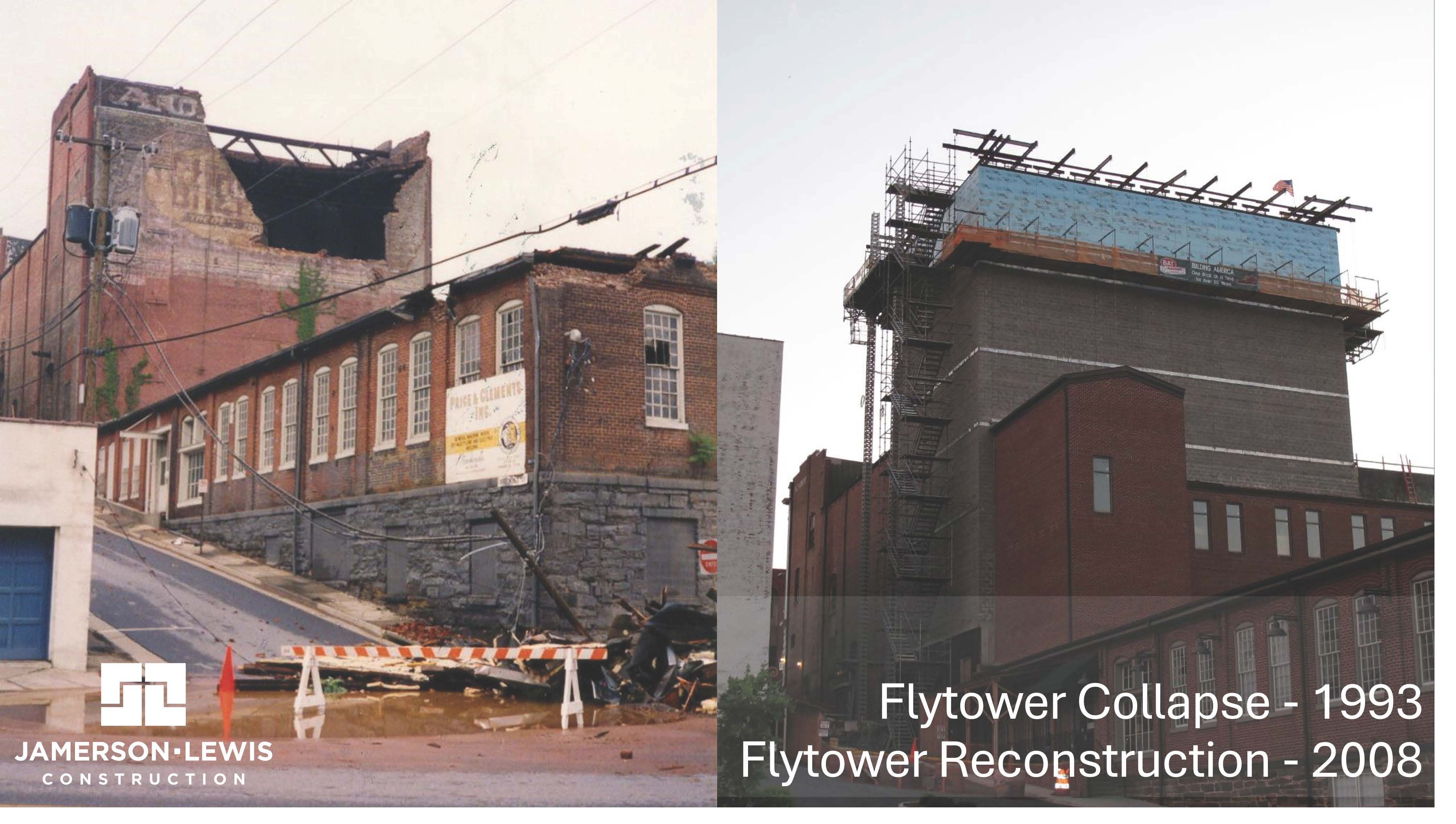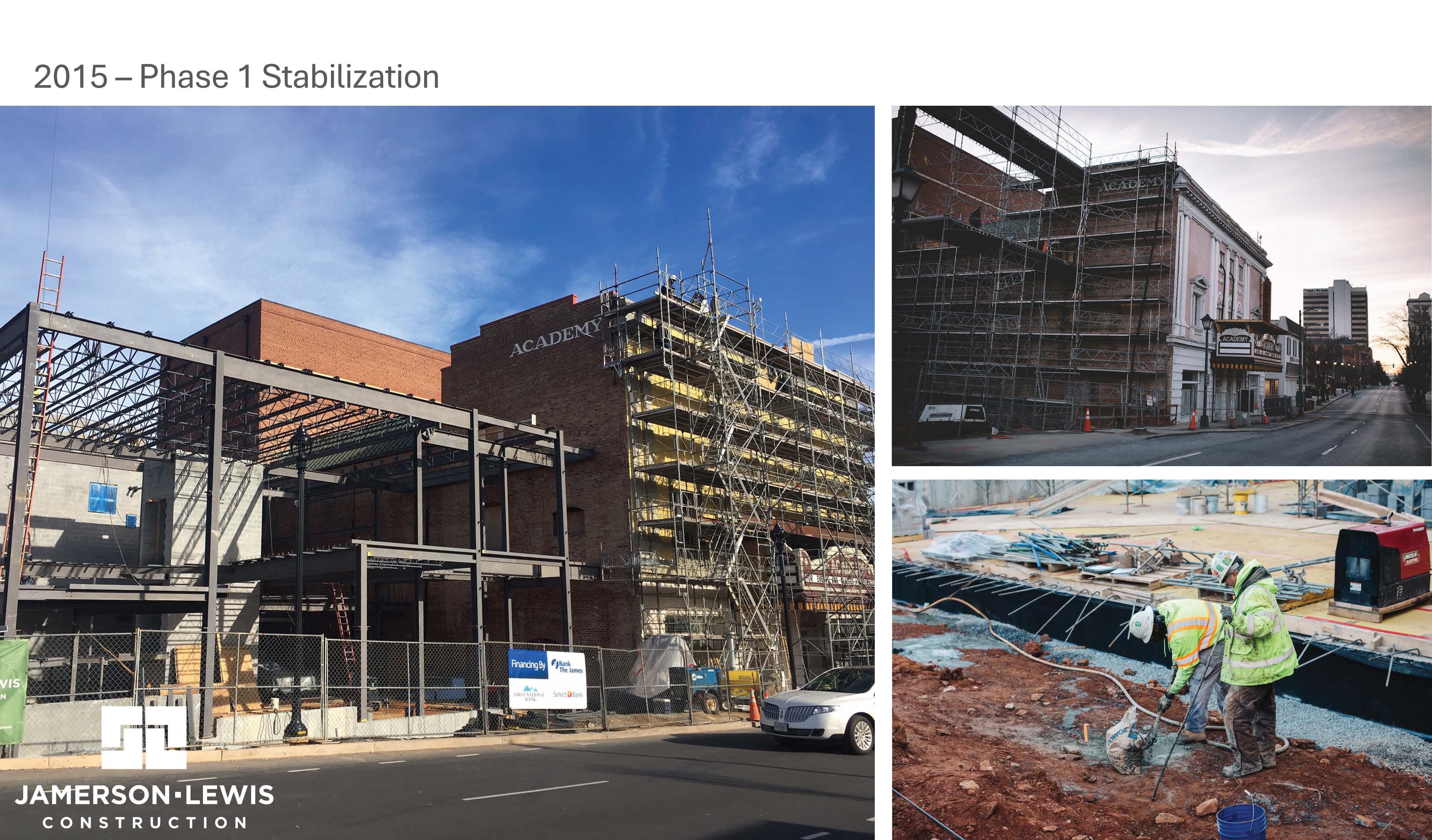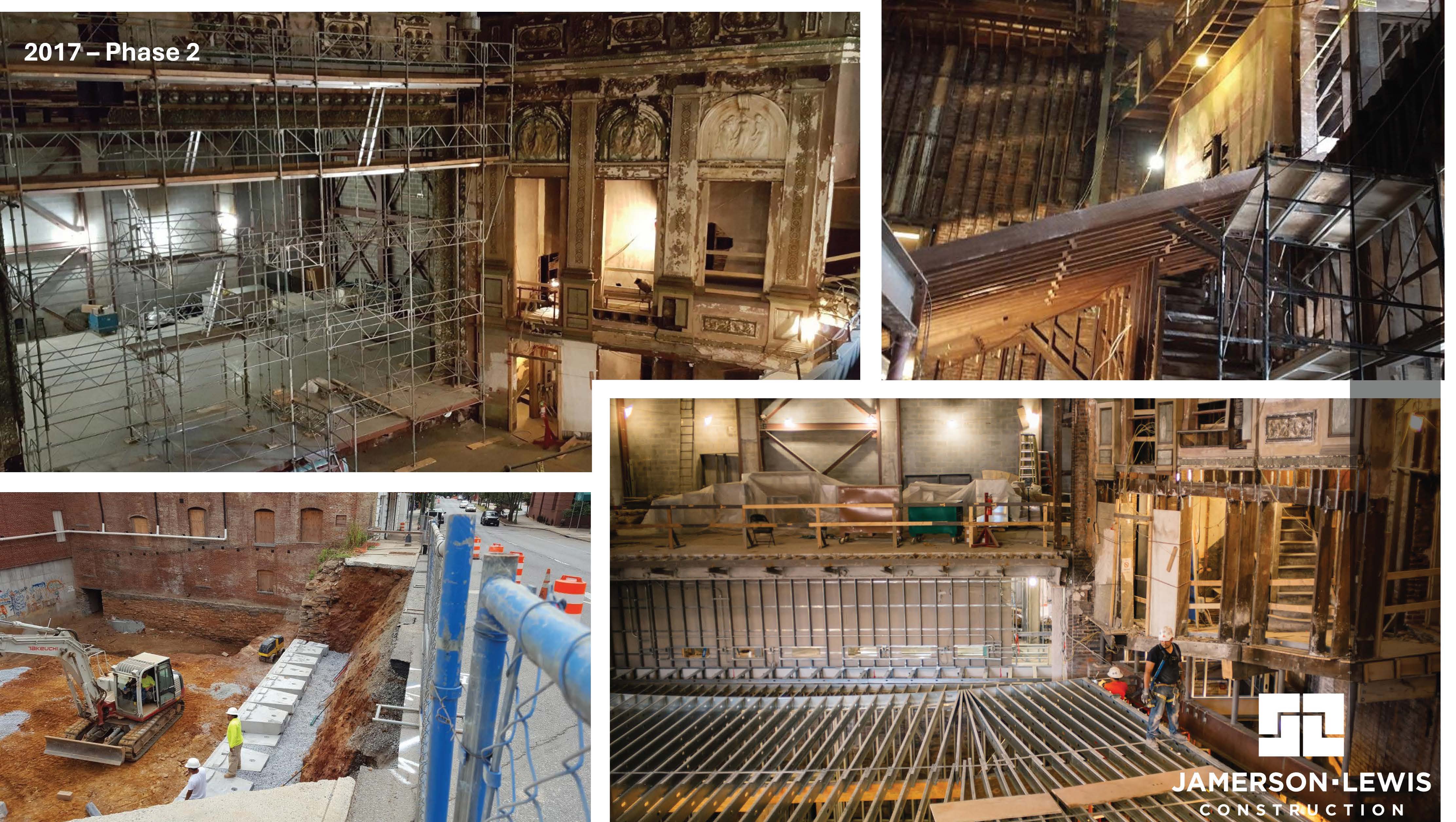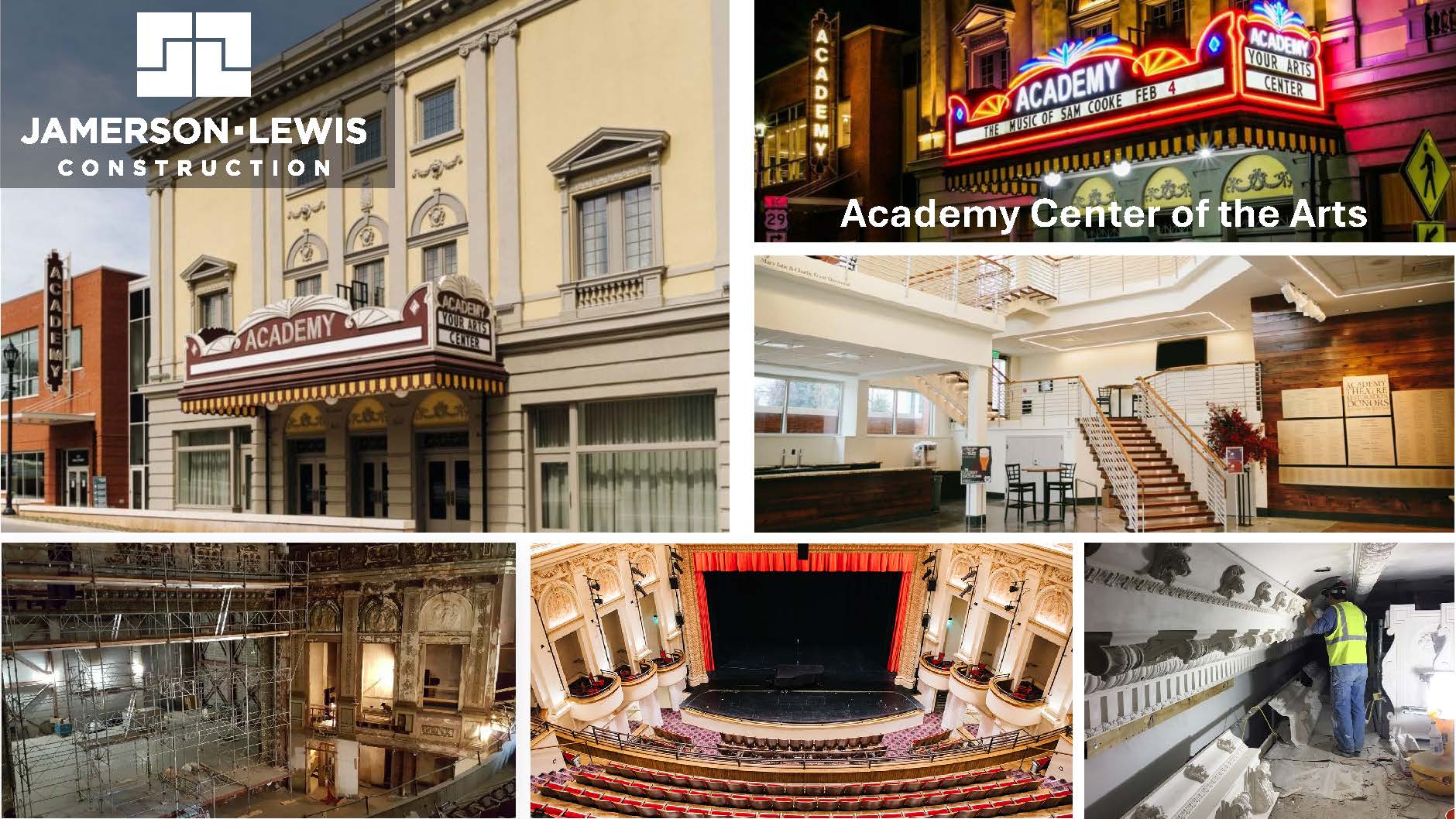- 1306 Stephenson Avenue, Lynchburg, VA 24501
- info@jamersonlewis.com
Preserving the Past, Building the Future: The Art of Historic Renovation
At Jamerson-Lewis Construction, historic renovations aren’t just another job—they’re a responsibility. These buildings tell stories, and it’s our job to make sure those stories continue for generations to come. Whether it’s a century-old courthouse, a historic school, or a local landmark, these structures deserve the kind of care and expertise that respects their history while making them functional for the future.
Restoring historic buildings isn’t like working on new construction. These projects come with their own unique challenges:
How We Approach Historic Renovation
At Jamerson-Lewis, we don’t just build; we partner with our clients to ensure their vision comes to life. Each project is unique, and we make it a point to fully understand the client’s goals, needs, and timeline.
What sets us apart is our commitment to communication and resource management. Clients often remark on our ability to keep them informed and involved every step of the way. As Geoffrey Kershner, Executive Director of the Academy Center of the Arts, noted: “This wasn’t just any construction project but the renovation of a public space that hadn’t been occupied in 60 years and was utilizing historic tax credits, which had strict Department of Historic Resources demands. This took a high level of specialty contractors, attention to detail, and a high level of engineering. Kevin’s leadership ensured that the final product was jaw-droppingly gorgeous and above all, functional.”
Projects
We’ve been honored to work on some of the region’s most significant historic restoration projects. While this is not an exhaustive list, here are some of the projects we’ve completed across different categories:
Cultural & Arts Centers
The Academy Center of the Arts in Lynchburg is a story of perseverance and community dedication. Opened in 1905 as the Academy of Music, the theater was a local hotspot for entertainment, featuring theater acts and early films. A fire in 1911 forced a rebuild, but the theater bounced back and remained a key part of the city’s culture for decades. But like many historic theaters, it eventually fell into decline and closed its doors in 1958. The building sat empty for years, narrowly escaping demolition multiple times. It was the dedication of the community and preservation groups that kept hope alive. Jamerson-Lewis took on the challenge of restoring the Academy, reinforcing the fly tower, carefully matching ornamental plasterwork, and updating the space while keeping its historic charm intact. When the Academy reopened in 2018, it was more than just a building coming back to life—it was a piece of Lynchburg’s history, revived and ready to serve the community for years to come.
The following photos showcase the Academy's journey through restoration:




The State Theatre of Culpeper was similarly restored with updated structural components and period-specific details, ensuring its continued use as a community venue. Our work on the 921 Main Street Fine Art Gallery successfully transformed a historic structure into a refined, functional art space that honors the building’s original details.
Higher Education & Institutional Buildings
For Randolph College, our renovations to Martin Science Hall modernized its lab spaces while preserving the building’s structural integrity. The renovations to Wright Hall upgraded student living spaces while maintaining the historic character that defines the campus. At VMI’s Moody Hall, we balanced the need for updated facilities with the preservation of its distinguished military heritage.
Religious Buildings
Our restoration work on St. John’s Episcopal Church, First Presbyterian Church, and Rivermont Evangelical Presbyterian Church focused on preserving stained glass, intricate woodwork, and historical masonry. Each project required detailed craftsmanship to restore Gothic Revival elements, original millwork, and structural reinforcements while maintaining these sacred spaces for future generations.
Historic Courthouses & Government Buildings
In the public sector, the Lynchburg Courthouse Museum Rehabilitation ensured this historic courthouse remained structurally sound while preserving courtroom details. The Bedford County Courthouse Bell Tower restoration stabilized a key architectural feature that has stood for generations. In Nelson County, we modernized the courthouse’s infrastructure while preserving its original design and historical significance.
Residential & Multi-Family
Historic structures often require adaptive reuse, as seen in our transformation of The Krise Building into modern apartments while retaining its character. The 1312 Church Street Townhomes project preserved the exterior details of historic residences while introducing contemporary amenities. Similarly, the Jefferson Street Apartments (River Loft Apartments) turned a former warehouse into upscale lofts, maintaining the charm of its industrial past.
Landmarks & Special Restorations
Our work on Monument Terrace in downtown Lynchburg helped preserve this iconic community landmark while reinforcing its structural integrity. Meanwhile, the historic farmstead at Meanwhile Back on the Farm - Locust Thicket was carefully restored to maintain its original structures while preparing it for long-term use.
Each of these projects reflects our dedication to craftsmanship, resource management, and an unmatched level of client service, ensuring these historic structures remain an integral part of their communities for years to come.
Why Historic Renovation Matters
Historic restoration isn’t just about preserving the past—it’s about making sure these buildings continue to serve a purpose. These projects breathe new life into aging structures, create vibrant spaces for communities, and honor the craftsmanship of those who built them. By restoring rather than replacing, we keep history alive in a way that’s both functional and meaningful.
At Jamerson-Lewis Construction, we take historic restoration seriously. It’s not just about construction—it’s about keeping history standing strong for generations to come.
Have a historic restoration project in mind? Let’s talk about how we can bring it back to life while preserving its story for the next generation.